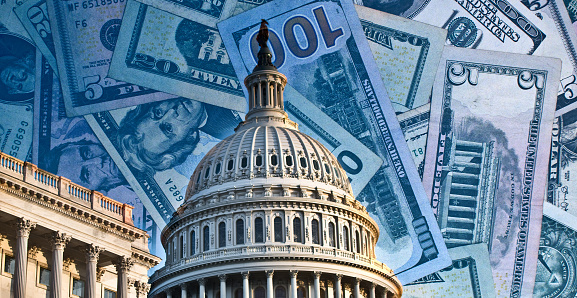Color Theory in Fashion: Unlocking the Power of Hues
Explore how understanding color theory in fashion can transform your style. Discover the art of combining colors effectively.

Color Theory in Fashion: Unlocking the Power of Hues
Color is a fundamental element of fashion that has the power to transform the way we perceive and experience clothing. From the vibrant red of a cocktail dress to the calming blue of denim jeans, every shade carries its own message, emotions, and symbolism. In this exploration of color theory in fashion, we'll delve into the fascinating world of hues and discover how they influence our choices, moods, and personal style.
The Basics of Color Theory
Understanding the basics of color theory is essential for anyone looking to make deliberate and impactful fashion choices. At its core, color theory is the science and art of using colors effectively to create harmony and visual appeal. It revolves around three primary elements: hue, saturation, and brightness.
- Hue:?Hue is the term used to describe the actual color, such as red, blue, or green.
- Saturation:?Saturation refers to the intensity or purity of a color. High saturation means a vivid, pure color, while low saturation results in a more muted or pastel version.
- Brightness:?Brightness, often referred to as value, indicates how light or dark a color is.
The Psychology of Color
Colors evoke emotions and psychological responses, making them a powerful tool in fashion. Here are some common emotions associated with different colors:
- Red:?Red is bold and attention-grabbing. It symbolizes passion, love, and energy.
- Blue:?Blue exudes calmness and stability. It is often associated with trust and reliability.
- Green:?Green represents growth, nature, and harmony. It is a calming and refreshing color.
- Yellow:?Yellow is vibrant and energetic, symbolizing happiness and positivity.
- Purple:?Purple is associated with luxury, creativity, and spirituality.
- Black:?Black is classic and timeless, often conveying sophistication and elegance.
- White:?White is pure and clean, symbolizing innocence and simplicity.
The Color Wheel
The color wheel is a visual representation of how colors relate to each other. It consists of primary colors (red, blue, and yellow), secondary colors (green, orange, and purple), and tertiary colors (colors created by mixing primary and secondary colors). Understanding the color wheel helps in creating harmonious color combinations in fashion.
Choosing Colors for Personal Style
Your choice of colors in clothing can reflect your personality and mood. Some individuals are drawn to bright, cheerful colors, while others prefer a more subdued palette. Experimenting with various color combinations can help you discover what resonates with your personal style.
Color Trends in Fashion
Fashion is ever-evolving, and color trends come and go. Designers and fashion houses often set the tone for the season by introducing new color palettes. Staying updated on these trends can be exciting and allow you to incorporate fresh, fashionable colors into your wardrobe.
The Power of Accessories
Accessories play a significant role in fashion, and they can be used to add pops of color to an outfit. A colorful scarf, statement necklace, or vibrant handbag can transform a neutral ensemble into a style statement.
In the world of fashion, color is a language of its own. It communicates emotions, conveys personality, and has the power to make a lasting impression. Whether you're selecting an outfit for a special occasion or curating your everyday wardrobe, understanding the principles of color theory can help you unlock the full potential of hues. So, go ahead, embrace the world of colors, and let your fashion choices speak volumes about who you are.?Certainly, let's continue our exploration of color theory in fashion and its profound impact on personal style and expression.
Color Symbolism in Fashion
Colors often carry cultural and symbolic meanings that can vary significantly from one society to another. For example, in Western cultures, white is associated with purity and weddings, while in some Eastern cultures, it symbolizes mourning. Understanding these cultural nuances can help you navigate fashion choices respectfully and appropriately.
Creating Versatile Wardrobes
An essential aspect of fashion is building a versatile wardrobe that offers a range of color options. Neutrals like black, white, gray, and beige serve as the foundation of many outfits. They are versatile, timeless, and can be easily mixed and matched with bolder colors to create diverse looks.
Seasonal Color Palettes
Fashion often follows seasonal fashion color palettes. Spring and summer may bring pastels and bright, cheerful colors, while fall and winter introduce deeper, earthy tones. Adapting your wardrobe to these seasonal shifts can help you stay stylish and in sync with the changing environment.
Embracing Personal Color Preferences
Fashion should be a reflection of your unique personality and preferences. If you feel particularly drawn to a specific color or set of colors, don't hesitate to make them a significant part of your wardrobe. Your fashion choices should resonate with your inner self.
Breaking Color Rules
Fashion rules are made to be broken. While color theory offers guidance on harmonious color combinations, experimentation is the key to creating distinctive and memorable outfits. Don't be afraid to mix unexpected colors or create unconventional pairings that express your individuality.
Color and Occasion
Different occasions call for different color choices. For formal events, classic colors like black, navy, and deep red are often preferred. Casual outings provide more room for playful and experimental color combinations.
Finding Inspiration
Fashion inspiration can come from various sources, such as nature, art, and travel. Exploring the world around you can lead to the discovery of unique color combinations and design ideas that resonate with your sense of style.
Sustainable Color Choices
As the fashion industry becomes more conscious of its environmental impact, sustainable and eco-friendly dyeing processes are gaining prominence. Choosing clothing made with sustainable dyes can contribute to a greener and more ethical fashion industry.
The Emotional Impact of Color
Remember that color can have a profound emotional impact on you and those around you. Wearing colors that make you feel happy, confident, and comfortable can positively affect your mood and interactions with others.
Color theory in fashion is not just about aesthetics; it's a powerful tool for self-expression and communication. The colors you choose to wear can convey your emotions, cultural affiliations, and personal preferences. By understanding the principles of color theory and embracing the versatility of hues, you can curate a wardrobe that reflects your unique identity and allows you to make a lasting impression in the world of fashion.
So, as you embark on your fashion journey, remember that the palette is vast and vibrant. Embrace the colors that resonate with your soul, break free from conventions when necessary, and let your personal style shine through the spectrum of hues.
What's Your Reaction?






















